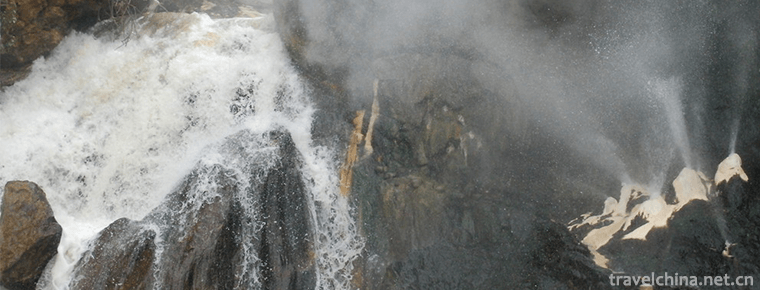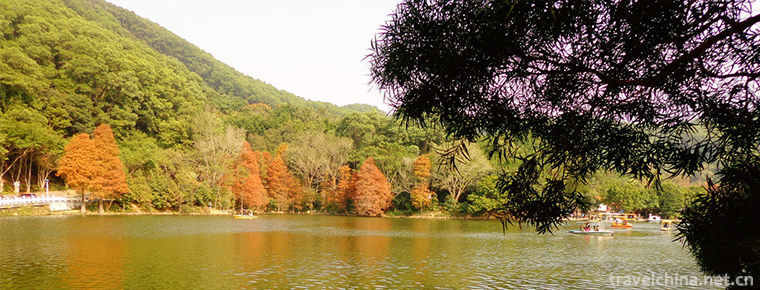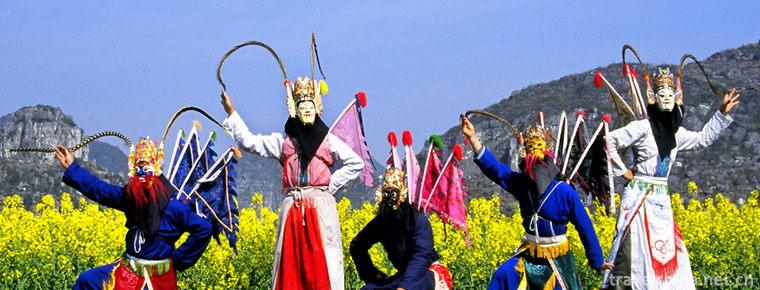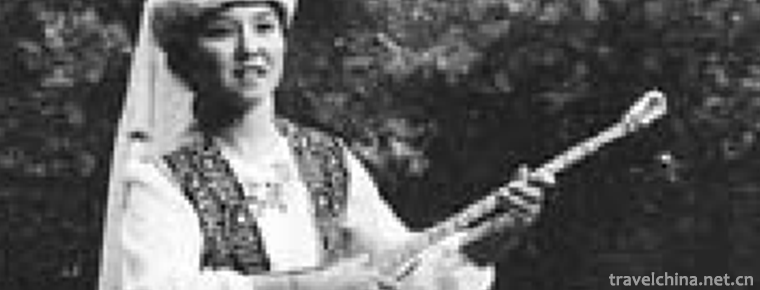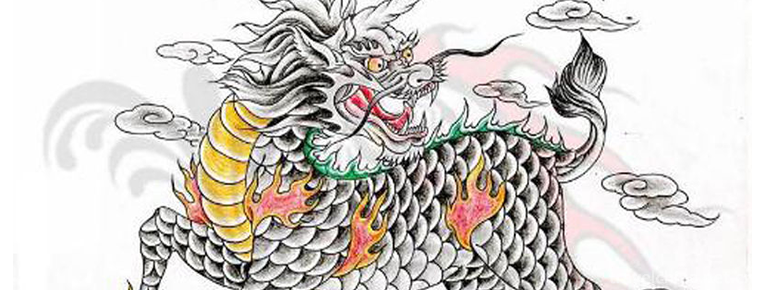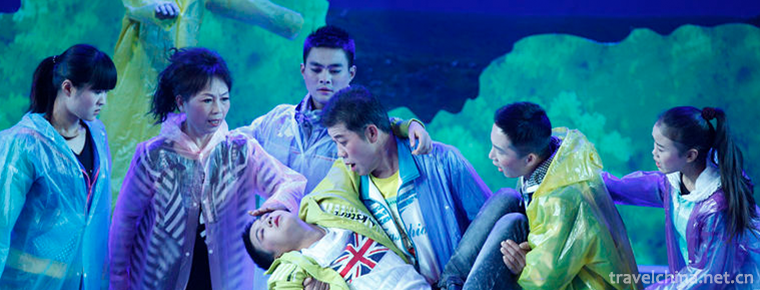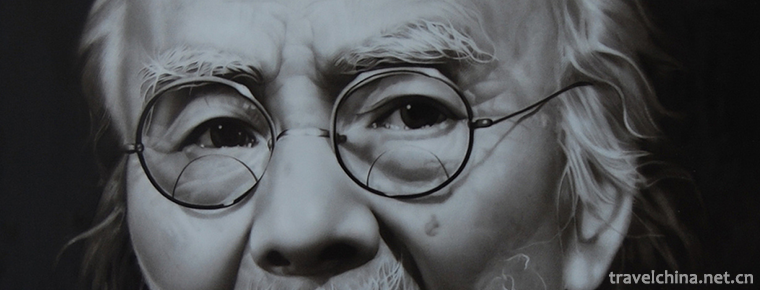Huizhou three carving
Huizhou three carving
The three carvings in Huizhou are a kind of local traditional carving art. They refer to three kinds of local traditional carving crafts, i.e. wood carving, stone carving and brick carving, with Huizhou style, in the area of six counties (Yixian, Shexian, Qimen, Xiuning, Taiping, Jixi and Wuyuan County, Jiangxi Province) in ancient Huizhou. Three carvings have a long history, exquisite skills, handed down from generation to generation, and complete process. They enjoy a high reputation at home and abroad. Their exquisite carving skills and immortal artistic value fully reflect the outstanding talent and artistic creativity of the ancient Chinese working people.
On May 20, 2006, the three carvings in Huizhou were listed in the first batch of national intangible cultural heritage list with the approval of the State Council.
In December 2018, the General Office of the Ministry of Education announced that Anhui Normal University was the base for the inheritance of the three carvings of Chinese traditional culture in Huizhou.
Historical origin
Wood carving, late Qing Dynasty and early Republic of China, Jixi County Hu Guobin, Wang Ju has a reputation for a while. Li Xiangshun's sculptures in Shexian County include Yao's ancestral hall in Shendu, Zhu's ancestral hall in Damao Village and Zhang Hanfei's residence in Dingtan. During the period of the Republic of China, Wu Binglie, Wang Xulun and Wang Jinjiu of Shexian County were good at wood carving. From the 1930s to the 1940s, they formed a wood carving group to perform art in Shexian. Wu and others enriched the theme of woodcarving with Hui Opera. They participated in the production of Woodcarving in Anhui Hall of the Great Hall of the People in Beijing. The main works handed down to the world include "Happy Harvest", "Zheng Successfully Liberated Taiwan", "Song of Peace", "Niu", "Tillage and Weaving Pictures", "Huangshan Scenery", "Lei Feng", "Red Lantern" and so on. In the early years of the Republic of China, Yihe Hall (Chengzhitang Hall) in Hongcun, Yihe Hall, Yixian County, employed five Fangzigui Masters and three Cheng Shuangxi Masters and apprentices from Hexian County to sculpt beams, windows and doors, and lintel masks, respectively.
Stone carvings, legend has it that Huangding, Zhu Yunliang, Yuxiang and other good stone carvings, Yushi was born in Yixian during the reign of Qianlong in Qing Dynasty. The "Xulun Hall" of Wu's ancestral hall on the North Bank of Shexian County was rebuilt in 1862 in Daoguang, Qing Dynasty. The stone sculpture arch slab of the West Lake Scene in the ancestral hall was carved by Yu Zhongchen of Yixian County. Wang Xianbo of Shexian County once went to Beijing to participate in the production of stone carvings in Anhui Hall of the Great Hall of the People. Since 1979, Wu Sightseeing in Shexian County has been an apprentice in Huizhou Ancient Construction Company. Wu's stone carvings have strict composition and exquisite knife technique. Feng Youjin, Cheng Youfu and others in Tunxi District are good at stone carving, building many stone halls and stone lions.
According to historical records, Ancient Huizhou has a long history. From the 13th year of Jian'an in the Eastern Han Dynasty (A.D. 208), it has been nearly two thousand years since ancient Huizhou was founded as a county. It is located at the junction of Anhui, Zhejiang and Jiangxi provinces. At the foot of Huangshan Mountain, it has beautiful landscapes and outstanding people. Huizhou merchants have been famous for their numerous businessmen and flourishing literary style at home and abroad. The development of Huizhou merchants has flourished the cause of culture and education. They have created Huizhou culture such as Xin'an Neo-Confucianism, Xin'an Medicine, Huizhou Park School, Xin'an Painting School, Huizhou Print, Huizhou Seal Carving, Huizhou Architecture and Huizhou Carving, and become one of the three schools of universities in China. The "three carvings" in Huizhou are the product of gradual formation and development under the background of such developed Huizhou culture. They are masterpieces of skilled craftsmen.
The history of "Three Sculptures" originated in Song Dynasty and reached its peak in Ming and Qing Dynasties. In the early Ming Dynasty, Hui School woodcarving had begun to take shape. The style of woodcarving was simple and extensive. It mainly used flat relief and shallow relief. Generally, only flat relief and shallow relief relief relief relief relied on line modeling, but lacked perspective change, but emphasized symmetry and rich decorative interest. After the mid-Ming Dynasty, with the enhancement of Huizhou merchants'financial resources, the consciousness of showing off in the countryside became stronger and stronger. Wood carving art also went to the transition of fine carving, and multi-layer carving replaced plane carving as the mainstream.
Qing Dynasty sculpture is exquisite and complex, composition and layout absorbed the performance of Xin'an Painting School, paying attention to artistic beauty, using deep relief and round sculpture, advocating hollow effect, some hollow layers up to more than ten layers, pavilions, pavilions, pavilions, trees, landscapes, figures, animals, flowers, birds, insects and fish gathered in the same picture, delicate, delicate, distinct layers, vivid, showing the superb sculptor. Artistic talent.
By the Ming and Qing Dynasties, the art of "three sculptures" had developed most vigorously, especially its knife skill and skill had reached the artistic conception that "the workers of heaven can replace the workers of heaven, but the man-made days are inferior". The sculptor holds the knife forcefully, carries the knife freely, the knife moves at will, means the knife reaches, the knife has the pen, complements each other, has manifested the knife method and the art consistent, the content and the style unification technique. "Three Carvings" is really the crystallization of Huizhou people's artistic creation and wisdom. It has attracted tourists and archaeologists from home and abroad.
The wood carving art of the Hu ancestral temple in Longchuan, Jixi County, which was built in the Song Dynasty and overhauled in the Ming and Jiajing Dynasties, is a case in point. Ancient Temple woodcarving uses the combination of relief, hollow carving and line carving. In addition to the carving of dragons and phoenixes and historical operas in Liangguo, Liangtuo and gate building, the whole layout of woodcarving on the ground doors and windows has three patterns: lotus, vase and Bailu. In art, there are various kinds of lotus blossoms, such as strolling, looking back at couples, sucking young deer, licking mother deer and so on. The sika deer in various shapes, thousands of knives, exquisite and beautiful vases, like "fairyland" carving boards, are intoxicating. If we look at the meaning, lotus chart means "harmony is precious", educating future generations to do things in a clean and innocent manner; Bailutu intends to wish their ancestors longevity; vase image represents the vision of a peaceful life for generations to come.
Inheritance significance
Badge carving branch
Wuyuan three carvings refer to brick carvings, stone carvings and wood carvings in ancient buildings of Ming and Qing Dynasties in Wuyuan County, Jiangxi Province (formerly Huizhou). They belong to the branch of Hui architectural art, and their products are mostly used as decorative parts in houses, official residences, ancestral halls, temples, corridors, bridges and archways. Its origin can be traced back to the Tang Dynasty, the rise of Hui merchants in Ming and Qing Dynasties, "Wuyuan Three Sculptures" reached its peak relying on Hui architecture. The related skills mainly distributed in Jiangwan Town, Sikou Town, Longshan Town, Tuochuan Town, Zheyuan Town, Tsinghua Town, Duanxin Town, Zhentou Town and other villages.
In the twenty-fourth year of Wanli in Ming Dynasty, the decoration of Shangshudi, built in Tuochuan Likeng, Wuyuan County by the Ministry of household affairs and industry, can be regarded as the initial example of "three carvings in Wuyuan". Later, Yu Maoheng, a ministry official in Ming Dynasty, built Shangguan Qingdi in Likeng in the sixth year of Tianqi. The construction of Simadi in Yuwei Shunzhi in the 16th year of Qing Dynasty marked that Wuyuan Sandiao entered a new stage of development. In the twentieth year of Kangxi reign, "Baizhu ancestral temple" was built in Huangcun, Gutan Township, northern Wuyuan County, and "Shangzhai Group" was built in Sixi and Yancun, Wuyuan County, in the first year of Qianlong reign of Qing Dynasty.
Although "Wuyuan Three Carvings" is attached to Hui architecture, it integrates aesthetics, mechanics, mathematics, history and ecology, and has profound cultural connotation and high artistic value. "Wuyuan three carvings" are made of very strict materials. Bricks must be made of water-milled green bricks produced locally. Stones must be made of "Qianxian Hei" in Anhui Province or Qingtian stone in Zhejiang Province or tea-green stone in Chun'an. Large wood carvings must be made of maple, camphor, cypress and Castanopsis over a century. Fine wood carvings must be made of fine-grained Nan, date, poplar and peach. All kinds of knife techniques are the key points of "Wuyuan three carvings". Their characteristics are that they are not restricted to one method, mixed and used, so that the work achieves a hollow and penetrating effect. Therefore, round carvings, reliefs, shallow carvings, deep carvings and penetrating carvings are very common. From Liu Sanyuanshi, nicknamed "Carving Three Sculptures", "Wuyuan Three Sculptures" have their own pedigree and are facing the same danger of losing their heritage as "Huizhou Three Sculptures". They are in urgent need of rescue and support.
The traditional craftsmanship of "three sculptures in Huizhou" has always been widely spread in the folk architecture and sculpture industry. After 1979, a number of ancient garden construction enterprises were established one after another. Some "three sculptures" old artists were reorganized and began to teach apprenticeship. However, due to the change of building materials, tools and cost accounting, the traditional sculpture techniques which are time-consuming, labor-consuming, material-consuming and difficult to master the knife method are gradually excluded from the scope of application, and many techniques have been lost.
The state attaches great importance to the protection of intangible cultural heritage. On May 20, 2006, the intangible cultural heritage was approved by the State Council and listed in the first batch of national intangible cultural heritage list. On June 5, 2007, the Ministry of Culture confirmed that Fang Xinzhong and Feng Youjin of Huangshan City, Anhui Province, were the representative successors of this cultural heritage project, and were included in the list of 226 representative successors of the first batch of national intangible cultural heritage projects.
From June 12 to June 17, 2014, Anhui Home Stadium Event of China Cultural Heritage Day 2014, sponsored by Anhui Provincial Culture Department and Anhui University, was held at the Art College of Anda University. Starting from "Hundred Workers in Yixian County and Folk Art in Action", we invite Wang Dehong, the successor of Huizhou woodcarving, to show the traditional art of Huizhou on the spot. The intangible cultural heritage has been introduced into universities for the first time, which has played a very good role in the protection and inheritance of cultural heritage.
Cultural influence
The themes of the three carvings in Huizhou are deeply influenced by Confucian culture. They are mostly plotted characters and stories, such as myths and allusions, opera stories, folklores and customs. Animal motifs are often tossed and danced, such as lions, unicorns, horses and deer. Flowers and birds have many patterns and varieties, mostly in the form of solitary flowers and twisted flowers and leaves. Bogu pictures are also commonly used patterns; while Beijing brick carving themes are mainly natural flowers and plants, or combination of auspicious patterns, sometimes some Bogu pictures, but character story patterns are very rare. Hezhou brick carvings are restricted by Islamic religious rules. They are all plant and geometric patterns, not animal and figure decorations.
The three carvings in Huizhou are the perfect combination of Chinese folk interest and literati interest. They reflect the influence of Xin'an Neo-Confucianism, emphasize the function of social enlightenment, and attach importance to the natural integration of emotional experience and moral ethics in aesthetics. The three sculptures fully reflect the characteristics of traditional folk art language and the subjective will of folk artists. The decorative, naive and naive art sculpture in the three carvings of Huizhou combines the excellent tradition of the Central Plains culture and art since Qin and Han Dynasties, and absorbs the rich nutrition of Huizhou regional culture. As a result, it produces a unique look which is exquisite and exquisite, fresh and elegant, and becomes a wonderful flower in the history of Chinese culture.


-
Old Summer PalaceYuanmingyuan
No. 28 Qinghua West Road, Haidian District, Beijing, China.
Views: 115 Time 2018-10-03 -
Tengchong Volcanic Hot Sea Tourist Area
The volcanic hot sea is located 20 kilometers southwest of Tengchong County. It covers an area of 9 square kilometers. There are more than 80 large gas springs and hot springs. Among them.
Views: 130 Time 2018-12-12 -
Fairy Lake Xianhu Botanical Garden
Xianhu Botanical Garden is located in Liantang Xianhu Road, east suburb of Luohu District, Shenzhen. It relies on Wutong Mountain in the East and Shenzhen Reservoir in the west..
Views: 119 Time 2018-12-22 -
Anshun land Opera
Anshun Dixi Opera, a local traditional drama in Anshun City, Guizhou Province, is one of the national intangible cultural heritage..
Views: 207 Time 2019-04-01 -
Kazakh Dongbra Art
Winter Bula's strength and speed vary widely, especially for fast music. Dongbula is suitable for men and women. The basic method of playing is playing and picking. .
Views: 188 Time 2019-05-02 -
Legend of Kirin
The legend of Kirin is mainly spread in Jiaxiang County of Shandong Province and its surrounding areas. Kirin is an auspicious God and animal in ancient legends. Ancient books say .
Views: 126 Time 2019-06-10 -
Fallen Drama zhui zi xi
Fallen Drama, a traditional drama in Shenze County of Hebei Province and Suzhou City of Anhui Province, is one of the national intangible cultural heritages..
Views: 235 Time 2019-08-16 -
Qi baishi
Qi Baishi (January 1, 1864 - September 16, 1957), formerly known as Zhi Zhi, the word Wei Qing, No. Lanting Pavilion, later renamed Huang, the word is on the edge, the number of Bai Shi, white stone m.
Views: 254 Time 2019-09-04 -
Beijing Information Science And Technology University
Beijing Information Science and Technology University (Beijing Information Science and Technology University), located in Beijing City, is a city with a coordinated development of engineering, managem.
Views: 157 Time 2019-09-21 -
Shicheng mountain
It is located in Shicheng mountain, Hengjiang Town, Xuzhou District, Sichuan Province. The total area is 5500 mu, including 4100 mu of forest. Shicheng mountain inclines from southwest to northeast. It has a good momentum.
Views: 133 Time 2020-10-16 -
Administrative division of Nanchong
Nanchong City governs nine county-level administrative divisions (Municipal District 3, county-level city 1, county-level 5), and 241 township level administrative divisions (street 42, town 161, township 38). It covers an area of 12514 square kilometers and has a population .
Views: 315 Time 2020-12-17 -
Nanchong hydrology
Nanchong is rich in precipitation. The average annual precipitation is 1000 mm, excluding evaporation, the annual total water is about 4.191 billion cubic meters, and the average annual runoff depth is about 313 mm. The distribution of runoff depth is generally .
Views: 347 Time 2020-12-17

